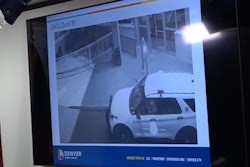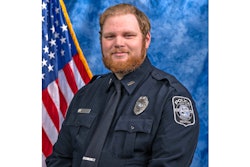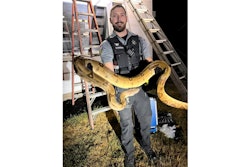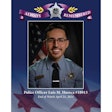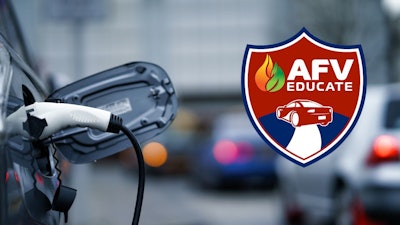 Police officers need to be aware of several special safety-related considerations when dealing with alternative-fuel vehicles.Canva/AFV Educate
Police officers need to be aware of several special safety-related considerations when dealing with alternative-fuel vehicles.Canva/AFV Educate
As more alternative-fuel and hybrid vehicles hit the road, police and other first responders need to understand that they are no more dangerous than conventional vehicles. However, there are certain safety considerations every cop should know.
Capt. Chris Womack, of the Indianapolis Fire Department, travels the country teaching first responders about those special considerations to keep in mind while dealing with alternative-fuel vehicles (AFVs). He and Michael Smyth formed AFV Educate several years ago to help better train first responders.
While Womack typically sees more firefighters attending his classes, he hopes police will see the benefits of becoming more informed about alternative-fuel vehicles and any added precautions they may need to take at accident scenes or while on traffic stops.
To his surprise, while teaching a class hosted by Clean Cities Georgia earlier this year, he noticed about half of the attendees were cops.
“I told them I like to see more police officers in the classroom when I teach these classes because a lot of times officers are on the scene first and they need to know what they're getting themselves into,” says Womack.
Silent Movement
To demonstrate how accident scenes can present dangers to officers when a vehicle is silent but then drives forward, Womack shares a video of an incident that injured a New York firefighter about a year ago. An electric SUV had come to rest partially on top of another vehicle. As the firefighter was working inside the passenger door of the SUV, the SUV started driving forward.
The video shows the SUV becoming unstable and toppling down, injuring the firefighters leg.
That “silent movement” is something officers need to be aware could happen.
The video illustrates an important point — never assume that a vehicle is shut off when you don’t hear the engine running. Womack explains that with an electric vehicle, there would not be any engine sound, but also many gas-powered vehicles shut off when stopped to conserve fuel. That also may move forward if a driver takes his or her foot off the brake pedal.
“So, what I tell everybody in public safety is that we treat every single car now like it's either electric, hybrid, or alternative-fuel vehicle until we can prove otherwise,” Womack says.
In the case of police officers, Womack says they can often be called upon to check on a vehicle that has stopped with a person inside — whether that person is passed out, sleeping, or experiencing a medical condition.
“The first thing law enforcement or firefighters want to do is beat on the window to try to get the patient to wake up, and that's a bad thing to do. Because, if that person comes up, they're going to take their foot off the brake and there would be a lunge forward,” he explains.
“So, when it comes to emergency settings, there’s really no danger to us,” he says in reference to AFVs. “We just have to be conscious of the silent movement and when approaching that vehicle make sure you realize that vehicle can still be in gear,” he adds.
Spotting an AFV Not Always Easy
Womack points out that when electric vehicles first hit the market, they were more distinguishable from traditionally fueled vehicles, but that is no longer the case. Now, hybrid and AFVs basically mirror their conventional vehicle counterparts.
“That’s why I tell people, when you come across any vehicle, you treat it like it's a hybrid electric or alternative fuel until you prove otherwise,” he added.
Womack also points out aftermarket parts can convert older vehicles into hybrid or electric vehicles, such as a 100%-electric 1952 Chevrolet truck he said was displayed at a show several years ago.
“These are things we have to put in our mindset,” he says. “We can't be complacent anymore. We can't make any assumptions anymore. We’ve got to be prepared.”
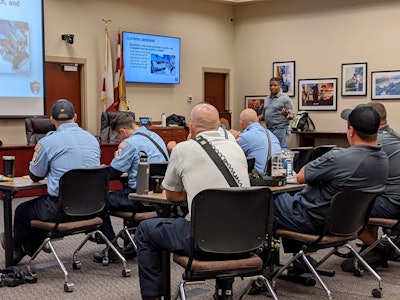 Chris Womack, of AFV Educate, leads first responders in a training about alternative-fuel vehicles.AFV Educate
Chris Womack, of AFV Educate, leads first responders in a training about alternative-fuel vehicles.AFV Educate
Myths and Bad Info
Womack always opens his classes by discussing myths and misconceptions about alternative-fuel vehicles and hybrids. Most first responders, he says, think they are more dangerous. But that’s not true.
“When it comes to these cars, they're not any more dangerous than a conventional vehicle and a lot of times they're actually safer,” he points out, with a reminder to again be aware of silent movement. “Our tactics are a little different.”
He informs students that most alternative-fuel vehicles incorporate safety features such as:
- The high-voltage system in a car is shut down if there is airbag deployment.
- Impact detection will use inertia switches to also shut down the high-voltage system.
- A similar safety feature with inertia switches will shut down the fuel system in compressed natural gas (CNG) or propane vehicles.
- Fault detection systems also can shut down the high-voltage system in electric and hybrid vehicles if a battery heats up or if there is some type of damage.
- Simply turning the vehicle off disables the high-voltage systems in these cars as well.
So, in practice, safety systems should shut electric and fuel systems down.
However, Smyth points out that officers and first responders can never be 100% sure that has happened and therefore should use caution.
He points to how Womack and firefighters can at times respond to motor vehicle accidents in which an airbag did not deploy and with that scenario, any safety systems activated by airbag deployment may not have functioned.
Smyth and Womack explain how with a traditional vehicle, firefighters will cut the power cables to the 12-volt system when the battery is accessible. They commonly do the same with alternative fuel systems and in the case of an EV, the 12-volt system controls the high-voltage system.
First On Scene
So, what should an officer do when he or she first arrives at the scene of an accident involving alternative-fuel vehicles?
“The biggest thing we tell them is turn the vehicle off. That's all you have to do,” says Womack. “A lot of officers that come across an accident, adrenaline's going, they don't hear an engine, so they assume it's already turned off. Make sure to look inside, turn the vehicle off, and make sure that it doesn't get put in gear, reverse, or drive, or whatever the case may be.”
Towing Differences
For hybrids and electric vehicles, there are special towing considerations officers should keep in mind when they request a wrecker.
“These cannot be put on a pull-behind wrecker, they have to be put on a flatbed. They have to put them on a flatbed or a dolly to keep the wheels off the ground,” explained Womack.
The issue is with regenerative braking. If being towed, as the tires roll these vehicles could be charging the battery, causing it to heat up, and possibly cause a fire.
Charging Stations
“The biggest thing I tell law enforcement, and everyone in public safety, is know what a charging station looks like,” Womack says.
Why is that important? Because many are along streets or in parking lots and could be struck and damaged during an accident. Some in Indianapolis, he explains, are only about six inches from the curb. If damaged, they could prove a danger to first responders.
He suggests officers download free apps that will help them know where the EV charging sites and alternative fueling stations are located in their areas.
The four charging possibilities are:
- Type 1 — Charging system with 120 volts, commonly used to plug in at home, a restaurant, or other location with normal household outlets
- Type 2 —Charging system with 240 volts, more commonly found in commercial settings
- Type 3 —Charging system with 480 volts, such as a Tesla Supercharging station
- Inductive charging system — More common in municipal fleet use, vehicle parks over plates in the ground
Womack says an officer’s concern with a charging station that has been hit by a car would be similar to his or her awareness if someone had struck a fuel pump. In either case an officer would not want to be “rushing in without knowing what’s going on.”
At the fire department, the approach when a charging station could potentially be damaged is to treat it like a downed power line. Some charging stations have shut offs, but some do not.
In the latter example, the only way to disrupt power would be for the power company to cut the flow of electricity.
In all cases, officers should secure the scene and keep onlookers safely away.
Gasoline in EVs
Officers may wonder why they could potentially be approaching an electric vehicle and smell gasoline after an accident. Womack points out that some electric vehicles do have a small five-gallon or so gas tank that can run a generator to recharge the car’s battery and extend its range when there is a scarcity of charging locations.
Teaching AFV Safety
Smyth previously worked for West Virginia University developing alternative-fuel vehicle training for automotive technicians and emergency responders. He recalls teaching a class in Indianapolis when Womack came forward, saying he wanted to help teach.
“He already had a background in emergency response, knew about alternative-fuel vehicles, and I think that he came to two or three classes that summer. An opportunity came open, and Chris started teaching for us,” Smyth explained.
About three years ago the two partnered to start AFV Educate, which Smyth said allows them to be more responsive to requests for training than in the prior format. They work a lot providing training with the U.S. Department of Energy Clean Cities Program.
Whether police officers, firefighters, EMS workers, or tow operators, Smyth said all should be trained about alternative-fuel vehicles. He and Womack typically see class enrollment mostly coming from the fire service, but they encourage law enforcement agencies to also train their personnel.
“They all need to have this knowledge because it's a chain, and everyone needs to work together to understand these vehicles aren't more dangerous, they're just different and you have to learn these new skills,” says Smyth.
He explained that AFV Educate is a non-profit entity and is open to sharing information with anyone who could benefit.
“They can reach out to us. Chris will answer questions, I will answer questions — email, or phone call,” adds Smyth. “We're here to support the community. Even if we aren't working with you as a paying customer, we share our information with anyone who can benefit from it.”







